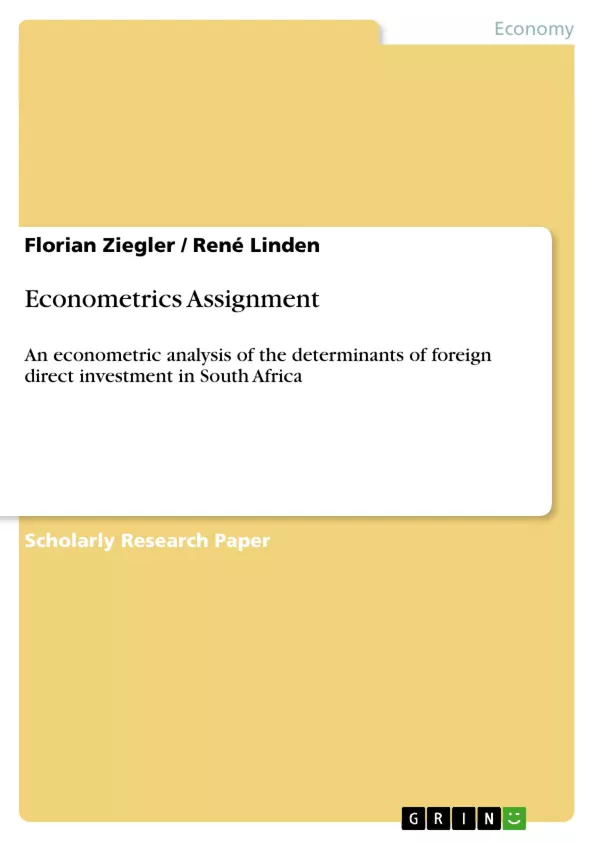The assignment is concerned with an economic analysis of the determinants of foreign direct investment in South Africa. Foreign direct investment (FDI) is the name known to the process where a firm from a country provides capital to an existing or newly-created firm in another country. The FDI might depend on several determinants like for instance, GDP per capita, GDP growth rate per annum, ratio of gross fixed capital formation to GDP, rand-dollar exchange rate, interest rate, labour productivity index and unemployment rate. In this assignment five independent variables have been taken into account: labour productivity non agricultural sectors, GDP per capita, rand-dollar exchange rate, total employment non agricultural and real interest rate. Foreign direct investment, especially in South Africa, may cater for economic growth.
Inhaltsverzeichnis (Table of Contents)
- Introduction
- Literature Review
- The Econometric Model and Estimation Method
- The Data
- The Results
- Coefficient estimates
- Statistics for hypotheses testing
- t-stats
- F-stats
- P-values
- Goodness-of-fit measures
- Conclusions
Zielsetzung und Themenschwerpunkte (Objectives and Key Themes)
This assignment aims to conduct an economic analysis of the determinants of foreign direct investment (FDI) in South Africa. The study examines the influence of various factors, such as GDP per capita, GDP growth rate, and the rand-dollar exchange rate, on FDI inflows.
- Factors influencing foreign direct investment in South Africa
- The role of FDI in promoting economic growth
- Comparison of FDI flows in South Africa to other emerging economies
- The importance of FDI in the global economy
- The impact of globalization on FDI flows
Zusammenfassung der Kapitel (Chapter Summaries)
- Introduction: The chapter introduces the concept of foreign direct investment and its significance to economic growth, particularly in South Africa. It outlines the key determinants of FDI that will be explored in the assignment, including labour productivity, GDP per capita, and exchange rates.
- Literature Review: This chapter provides an overview of existing literature on the topic of foreign direct investment, highlighting its growing importance in the global economy and the factors influencing FDI flows. It discusses the motivations for investment, modes of entry, and sources of risk associated with FDI.
Schlüsselwörter (Keywords)
The key terms and focus topics of this assignment include foreign direct investment, economic growth, South Africa, emerging markets, globalization, determinants of FDI, labour productivity, GDP per capita, exchange rates, and econometric analysis.
- Arbeit zitieren
- Florian Ziegler (Autor:in), René Linden (Autor:in), 2006, Econometrics Assignment, München, GRIN Verlag, https://www.grin.com/document/83410



